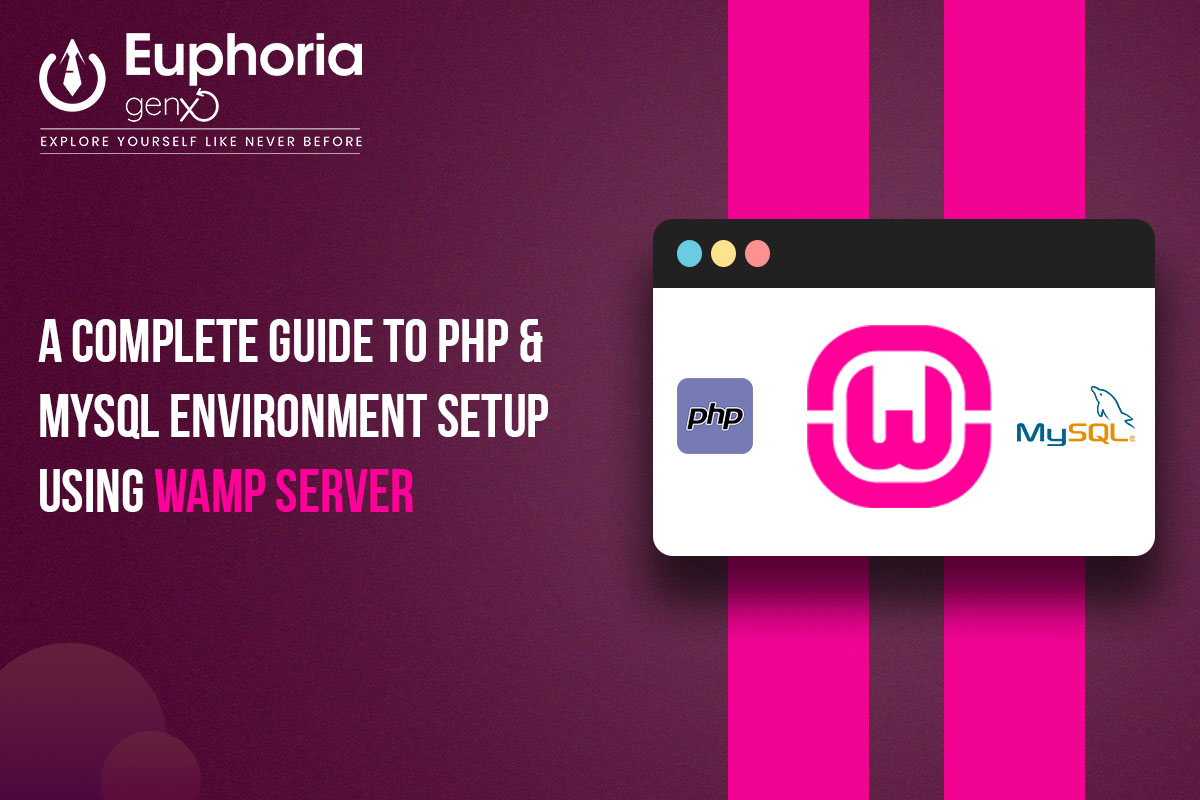
Whether you have years of experience as a PHP/MYSQL developer or a beginner, the local development environment could be truly helpful. Such kind of environments ensure you can test the code for your web application before the app goes live. Here is a thorough guideline for setting up PHP, MySQL and Apache development environments on your Windows system.
Those days are gone when you were supposed to an Apache server, PHP, and MySQL individually. Now these three components are bundled and pre-configured to run on a Windows system. Using WampServer would be recommended to set the basis for the local Apache / PHP / MySQL environment. If you are not interested in this all-in-one solution, you need to install the Windows installers differently for Apache, PHP, and MySQL.
Hopefully, we have chosen the easier path for environment setup by choosing WampServer. For installation just double-click on the setup file and go after the prompts.
To be sure of the proper installation, check whether Wamp is running correctly. Check whether you can see the welcome page of WampServer. If you can see this be sure everything is alright. Also, you may check the Wamp icon on the system tray. If you see a green icon rest assured everything is running smoothly.
WampServer includes phpMyAdmin, a web-based interface for managing MySQL databases. You can access it through the WampServer dashboard. Now launch phpMyAdmin.To launch this open-source administration tool, follow these steps.
Now it’s the time to create your first MySQL database. Go after these steps to do this.
Make sure PHP is pre-installed in your system You may need to configure PHP settings to suit your development needs. Configure PHP settings following these steps
Here is an example of what you might configure in the php.ini file:
To do this, you need to focus on configuring the database credentials in the PHP script. Do this following these steps
To check the connection with the MySQL database, create a simple PHP file. Go after these steps for testing.
Here is an example prompt to create a PHP file in the WampServer www directory:
Create a PHP file in WampServer’s www directory
File name: test.php
File location: C:\wamp64\www\test.php (assuming you’re using WampServer 64-bit on Windows)
File contents:
PHP
<?php
// Your PHP code goes here
echo “Hello, World!”;
?>
Note: Don’t forget to replace C:\wamp64\www with the actual path to your WampServer’s www directory.
You may use an Integrated Development Environment (IDE) like Visual Studio Code or Sublime Text for this. Select an IDE that supports PHP and offers features like syntax highlighting and debugging.
Before delving into complex projects, get familiar with the basic PHP syntax. Use online resources, tutorials, and documentation to understand PHP basics. Practice writing simple scripts.
Here’s an example of a simple PHP script.
Learn the fundamentals of MySQL, including how to create tables and write queries. Here also Online tutorials and documentation could be a great help. Enhance efficiency by doing thorough practices.
After you are done with the environment setup, try to build a web app on your own and start with a simple app. As you become more comfortable, explore advanced PHP and MySQL features.
Setting up a PHP and MySQL environment using WampServer is a straightforward process that lays the foundation for developing dynamic web applications. By following these steps, you’ll be well on your way to creating robust web projects. Practice regularly and explore advanced features to enhance your skills.

How Internships and Live Projects Prepare You for Real IT Jobs

What Can You Achieve After Becoming a PHP Full Stack Developer?

Top 7 Reasons Why Placement Assistance Matters in IT Training Programs

Why Digital Marketing Will Dominate the Job Market in the Upcoming Future?

How Can a Data Analytics with Power BI Course Help You Land High-Paying Jobs?


© 2025 Euphoria GenX. All Rights Reserved